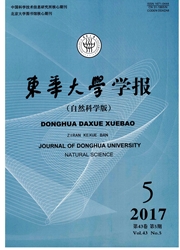

 中文摘要:
中文摘要:
从美国迷尼苏达大学Cedar Creek生态科学研究保留地的BioCON(Biodiversity,CO2,Nitrogen)试验田取得24个样品对氮沉积效应进行研究.通过添加氮肥的方法模拟了氮沉积效应对植物生长和土壤微生物群落结构的影响,并运用功能基因芯片技术得到了一些实验结果:氮肥的施加对地上植物生物量增长有促进作用,但会对植物根部的生长产生不良影响;氮肥的添加会使土壤中微生物群落结构发生改变,使得添加了氮肥的土壤样品中的微生物群落结构变得简单化,而且这种改变是显著的;在置信度为95%的情况下,参与氮循环的功能基因在施加氮肥的样品中的丰度比未施加氮肥样品中的基因丰度要低.另外,还研究了各个样品中微生物群落结构变化与环境因子之间的关系.
 英文摘要:
英文摘要:
To understand the effect of nitrogen deposition to microbial communities and plant growth,24 soil samples were taken from the BioCON(Biodiversity,CO2,and Nitrogen)ecological experiment site at the University of Minnesota's Cedar Creek Ecosystem Science Reserve,USA.Nitrogenous fertilizer was added to simulate the effect of increasing nitrogen deposition.Functional gene arrays(FGAs)were used and the results were as follows.Adding nitrogenous fertilizer made aboveground plant biomass increase in the sampling points,at the same time it decreased the plant biomass of underground roots.After Adding nitrogenous fertilizer,microbial community diversity decreased in the soil samples,and the contrast was significant.At confidence level of 95%,functional genes involved in nitrogen cycling in the fertilized samples were less than those in the non-fertilized samples.In addition,the relationship between microbial communities and environmental factors was studied.
 同期刊论文项目
同期刊论文项目
 同项目期刊论文
同项目期刊论文
 期刊信息
期刊信息
